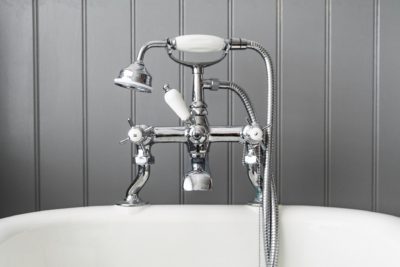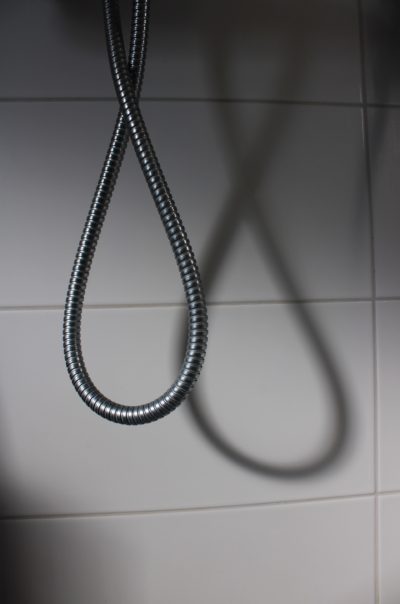Flexible metal hoses are useful in a variety of industries. One of the biggest users of industrial metal hoses is the chemical plant industry. In a chemical plant, there are demanding environments that your equipment needs to withstand.
Among them include extreme heat, cryogenics, transferring hazardous compounds, and complex equipment configurations. Metal hoses can manage these challenges when used properly. It’s important to store them properly as well. Here’s what you need to know about using metal hoses and storing them.
IMAGE: UNSPLASH
Handling
Metal hoses often fail due to mishandling. Chemical plants utilize multiple inputs and outputs during operation. Hoses are used to transfer chemicals from barges, trains, and trucks to the plant. They’re also used to transfer chemicals inside the plant from one unit to another.
One example is a chemical blending manifold. A single-hose assembly is being used for various connections at different times based on what operation the plant is currently performing. It’s critical to be able to easily and quickly connect and disconnect metal hoses. It’s best for chemical plants to use cam and groove couplings when connecting and disconnecting a metal hose.
When moving a hose from one outlet to another, avoid over-bending the hose or torquing it into position. It’s important to keep the equipment as straight as possible and not twist it. Be mindful that while metal hoses are made to flex, tight bends near the end fitting will damage the hose and make it fail prematurely.
Attributes
Metal hose assemblies have many features that can work well for chemical plants. One of the most important features is they’re not vulnerable to permeation. That helps with ensuring operational safety and plant safety. The metal core is also puncture-resistant. If a leak occurs, the hose can develop a small crack and doesn’t burst apart.
Additionally, the end fitting configuration is more compact. End fittings are welded at the end of the hose. As a result, it doesn’t limit the hose’s flexible length, allowing for more working live length compared to non-metallic assemblies.
Operators are better able to handle and install the hose. The hose can also be more easily customized without having to use adapters. Chemical plants can use a variety of fitting configurations through using stainless steel fabrication techniques. Be sure to customize your hose in a way that accommodates high system pressures, prevents media entrapment, and resists end pull.
Since metal hoses are lightweight, it can potentially offer higher working pressures than rubber hoses. With higher working pressures, it can be used for other applications and be easier for operators to install.
Host Construction Options
Host assembly performance can be boosted by using hose construction options. Given the importance of not overbending, bend restrictors can help prevent overbending by being placed on the outside of the hose. Bend restrictors are a short piece of stripwound armor that’s placed near the end fitting.
Other options to consider are items that enhance the exterior of your metal hose. Hoses can be subject to harsh weather, the plant environment, and also being rubbed or dragged along metal or concrete. Protective covers can be placed over the metal hose to protect the braid wires from physical or chemical damage.
In addition to protecting the exterior, chemical plants might have to convey viscous media in extreme environments. Media can be kept hot or cold through jacketed or traced hose assembly. Two-hose systems are normally used in these configurations.
One hose carries the media being conveyed, and the other carries a thermal fluid. The media will be able to stay at a temperature that keeps it flowing and prevents problems that can cause a shutdown.
How To Store Metal Hoses
While pairing the right product and the right application is crucial with using a hose, storing it is also equally critical. Properly storing this equipment before they’re put into service helps to maximize its lifespan. Unplanned downtime is one of the main priorities of industrial operations.
Plants keep an inventory of items such as hoses on hand to swap out to minimize loss of production time. Some chemical plants leave hoses on the ground outside of the facility. Doing this is a mistake, as it can significantly reduce the service life of the item.
When storing a metal hose, the first thing to consider is external considerations. When storing a hose outside, rain or dust can get on the stainless steel. While these elements may seem significant, it can cause damage over time. When rain falls near a plant facility, it picks up the nearby gas.
When the water dries up, a concentrated residue is left behind, which can cause corrosion. Dust can do this, too. Spare parts inventories and maintenance storage cribs are often near the equipment they’re meant to service.
Significant dust can pick up off-gases and chemicals present in the plant and carry them onto the outside of uncovered hoses. The mixture can cause chemical reactions that corrode the exterior of the hose.
One example of how this can occur is in a coal-fired power plant. Imagine a baghouse collecting ash improperly releasing a large amount of particulate. If it combines with lime dust and lands on a hose assembly, the exterior can become embrittled and fail.
Even if corrosion doesn’t occur, there can be buildup in-between the corrugations and underneath the braid of the hose. It can be challenging to clean out and it affects the hose corrugation’s flexing ability.
Simple modifications or specific storage areas for the metal hose can prevent these issues from occurring. Chemical plants can adjust their plant layout to keep the components away from the elements and out of the open air. Plastic containers, cardboard boxes, or wooden crates can help keep the hoses clean until they’re ready to be used.
Additionally, keeping the containers you use off the ground can prevent them from getting wet. It’s particularly important in the case of using cardboard because if it gets wet, moisture can become stored with the hoses.
Another option that can be considered is hanging racks. When using them, make sure the hoses have some kind of containment. One way to store them without containment is to drape the assembly over two points, which can allow it to hang as an upside-down “U.”
It will make it much harder for water to get into the hose and stay inside. Chemical plants should avoid hanging the hoses from only one end fitting in a vertical fashion or in an upright “U” position, as it will allow more contaminants to get in the assembly.
It’s also important to be aware of the flexibility of the hose. Metal hoses have limits to how far they can be bent before they become unable to spring back into position. It’s similar to if you bend a paper clip.
Once you bend it past a certain degree, it won’t be able to get back in that position. Manufacturers publish the bend radius information in their catalogs. It’s important to review it, so you know how far not to bend it when putting it into storage.
An additional storage solution you can consider is changing how you order your hose assemblies. While it can cost a few more dollars upfront, it can help ensure your assemblies last until they’re put into use.
Chemical plants can choose to order hoses with caps on the ends. They can also be temporarily sealed with plastic for another layer of protection. The threads will be protected, which can ensure a leak-free connection.
Using Identification
Make use of identification and traceability to manage the spare hoses you have. Different simple identification options you can use are tags or permanently etched fittings. Using identification will make it quicker to identify a particular hose – when it was purchased, its material, and the length of time it has been in service. Keeping track of this information can help chemical plants judge the quality of the storage operation, and how well the hoses have been lasting before and during service.
Signs Of Corrosion
Pay attention to any signs of corrosion by noting any chemical residue on the hose assembly’s outer surface. Be sure to re-test the assemblies periodically to see that they can still safely handle the required pressure. Once tested, the hoses need to be retagged with the test date and pressure.
Even if there are no corrosion signs, it’s still advisable to replace the metal hose assemblies at regular intervals if they’re being used for critical service applications. Additionally, look for dents, braid bulging, hose squirm, or other physical damage as this can reduce the metal hose’s ability to withstand fatigue.
Certain joint designs can have detection devices to indicate if the innermost ply isn’t retaining pressure any longer. Knowing about the process of using flexible metal hoses can help with finding the right option for a chemical plant.
It’s all necessary to store hoses properly to ensure that the equipment has a long life. If you’re interested in learning more about flexible metal hoses, you can find more information at this link: https://aero-flex.aero/flexible-metal-hose-manufacturer-supplier/.
If you are interested in even more technology-related articles and information from us here at Bit Rebels, then we have a lot to choose from.


COMMENTS